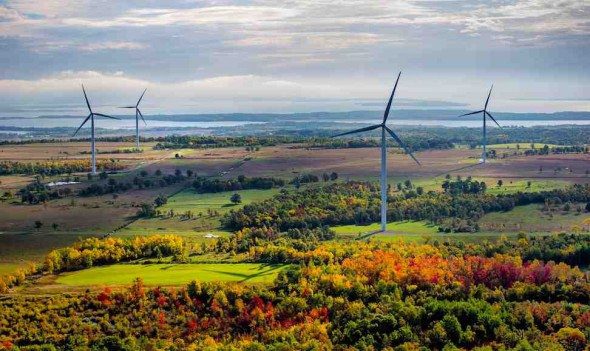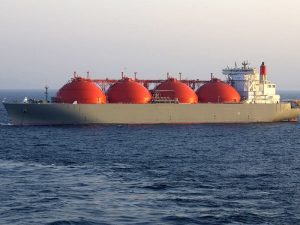As Australia’s federal Coalition continues to fudge and delay on a national energy and climate policy, the state Labor government in Victoria has pressed “go” on what will be the largest renewable energy tender held in Australia – 650MW of mostly wind and solar.
The formal tender documents were released by the Victoria government on Tuesday afternoon, inviting project developers to enter what appears to be a complex, hybrid bidding process that closes on February 14, and will require the wind and solar farms to be built by 2020.
The timing of tender is critically important for the Australian industry, coming as the federal renewable energy target is nearly met, and the industry is left confused and perplexed about what might come from the proposed National Energy Guarantee.
COAG will meet at the end of next week to decide whether to order new work on the NEG – which appears to be little more than a thought bubble. So far, the states have suggested they don’t want a bar of it.
Victoria is charging ahead with its newly legislated target of having 25 per cent of its electricity delivered by renewables by 2020, and 40 per cent by 2025. The first target will need a further 1500MW, including this auction, while the 2025 target will need about 5,400MW of new capacity.
“Renewable energy is key to Victoria’s future and we’re not wasting a minute – to drive new investment, create jobs and cut electricity prices,” Victoria energy minister Lily D’Ambrosio said in a statement.
“This competitive auction will provide much needed certainty to the energy industry, supporting new projects in regional Victoria.”
The 650MW auction , flagged in August, will comprise 100MW specifically set aside for large scale solar projects, while the remainder is open to both technologies.
The price for the projects will be set around two main components. The first is a price that sets the MWH price of the wind and solar projects – $56/MWh for wind, $53/MWh for solar PV and $56/MWh for solar PV with tracking.
Under the mechanism, known as a contract for difference, if the wholesale price is higher than those numbers (and it has been nearly twice as high as that in Victoria for most of this year), then the wind farm owner returns the difference to the government.
If the wholesale price is lower, then the government makes up the difference to the renewable project owners to guarantee them a minimum ongoing income.
The interesting part will come in how much more the wind and solar farm developers need to make it work. This will be decided by a competitive tender of the fixed price component (base amount) of the deal, a cost per year per megawatt installed.
Given that recent contracts such as Stockyard Hill have struck power purchase agreement with Origin Energy at below $55/MWh, then the bidding on that component ought to be very low (although some consider that particular contract to be a “one-off)”.
Solar farms will likely need more – particularly in Victoria which has less good solar resources than Queensland, South Australia, or Western Australia.
Solar farm developers will likely need a total return of around $70/MWh – still significantly cheaper than recent wholesale prices and well below the assumed costs included in the federal government’s NEG modelling.
It is thought that the hybrid bidding process, rather than just a single bid on the contract for difference – was chosen because it would limit Victoria’s exposure to wholesale price movements. This way, the government can benefit if the wholesale price falls dramatically in doing years.
The auction is the biggest ever in Australia. The ACT government allocated a little over 700MW, but over a series of four different solar and wind auctions in its pursuit of 100 per cent renewable energy by 2020.. Most were decided by a contract for difference bid.
Queensland proposes a 400MW tender, including 100MW of storage, but this is on hold pending the outcome of the state election later this month. And the result of that is far from clear. The Coalition, should it win, has vowed to scrap all renewable energy initiatives.
W.A. is finally acting to build large scale wind and solar farms after a three year investment drought, but this week it controversially approved a new “green fund” that will likely invest only in projects owned by the dominant utility, the state-owned Synergy.
Independent power producers have called foul, wondering why there was no open tender, warning it will simply reinforce the power of the incumbents, and saying it could kill the broader development of wind and solar in that state.
The same accusations are being levelled at the federal government’s proposed NEG, with the most concern about its potential to simply reinforce the power of the incumbents, and potentially erect a barrier to new wind and solar, depending on how the “reliability” obligation is put together.
Concerns have been heightened by the decision of the Energy Security Board to use deliberately inflated technology cost assumptions for both wind and solar, which are significantly higher than publicly disclosed contracts, and the assumptions in the VRET documents.
The fear is that this policy is being designed to placate the far right of the conservative parties and deliver the answers they are seeking – mainly that coal has a future. But by doing that, the ESB could end up designing a completely dud and obstructive policy, and bad for renewables.
The Victoria renewable energy auction is expected to drive up to $1.3 billion in new capital expenditure, create 1,250 construction jobs and 90 on-going roles.
“This is what leadership and confidence looks like. The Victorian government is to be congratulated,” said Andrew Bray, national coordinator of the Australian Wind Alliance.
“Victoria has world-leading wind resources and the VRET creates the policy certainty needed to generate jobs and economic benefits to communities all across the state.”
Other key components to be considered in the tender are local investment opportunities, the technical capabilities of the developer, community engagement and impact of existing grid infrastructure. Proponents will need an agreed grid connection.
“Victoria is in the midst of a transformation towards a modern energy system that is more affordable, reliable and sustainable,” the documents say, noting that renewables will improve system supply, create new jobs, and deliver health, and social benefits and reduce greenhouse gases.
Winners will be notified in July, next year. And it will likely be the last auction before the state election in November, 2018
The state Coalition remains implacably opposed, and voted against the VRET in parliament.
Earlier this month, at a Victoria Liberal Party function, the party presented federal treasurer Scott Morrison with a lump of brown coal as a gesture of its appreciation for the government’s anti-renewables policies. The state goes to the polls in November, 2018.












